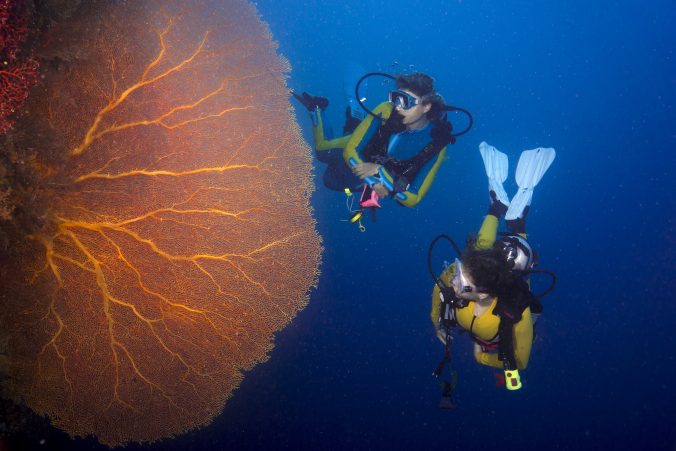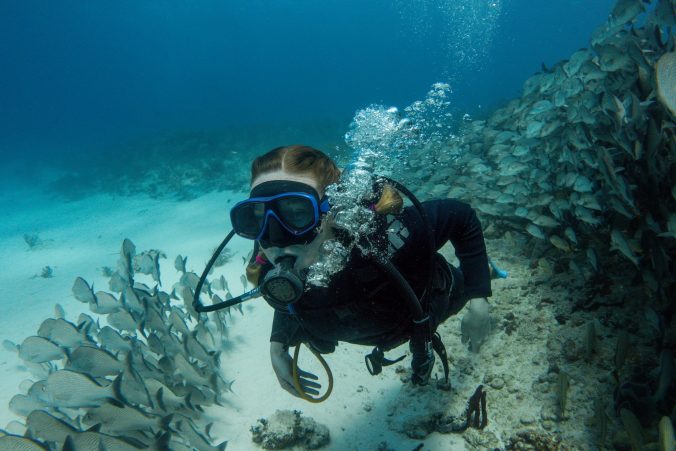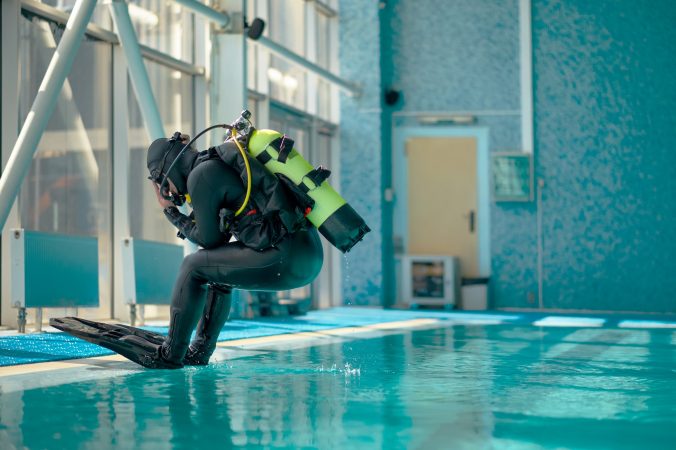Whether you’ve always dreamed of exploring the pyramids or have never been to Egypt, the Scuba Scene is an excellent choice for an adventure holiday. This liveaboard offers nine twin bed cabins and four king suites, each with their own private bathroom and stone-tiled shower. Cabin amenities include adjustable temperature controlled air conditioning, two flat-screen televisions, DVDs and a sound system. The pyramids of Sakarra, tombs and burial temples, and a nearly 30 foot Ramses the Great are all featured on the itinerary.
All Star Scuba Scene
MY All Star Scuba Scene is a 43m (141ft) long Egypt Red Sea diving safari boat. It carries up to 26 passengers in 13 cabins with private ensuite bathrooms. It scores 88% on Scuba Diving Earth’s luxury rate. The vessel has a spacious dive deck and indoor dining area. The MY All Star Scuba Scene also offers flexible booking. Guests can even get free nitrox for their first dive!
The All Star Scuba Scene is a luxury 141-foot dive boat. It can accommodate 26 guests in 13 en-suite cabins. The dive deck has ample space for the divers and includes personal gear stations and camera tables. This luxury liveaboard provides dive tours to several of Egypt’s most popular dive sites. Further, guests can experience the rich marine life in its natural habitat. You can also take the Advanced Open Water Diver (AOWD) certification course while on board.
The Scuba Scene has nine twin cabins and four king suites. Each cabin has a private bathroom with stone-tiled showers. The cabins have adjustable temperature controls. A mini-refrigerator is located in the cabin, and air conditioning is climate-controlled. The Scuba Scene offers a full range of recreational equipment for rent, as well as technical dive gear like Manifold twinsets, 100CF stages, and rigging. Guests can expect to see hammerheads, silky sharks, oceanic whitetips, and even whale sharks.
Itineraries
There are various itinerary options for a scuba scene liveaboard. There are several factors to consider, such as experience level and location. Those interested in shark diving should choose the Simply The Best itinerary. This tour covers the Elphinstone and Daedalus islands and both Brothers. In addition to these popular dive sites, the Simply The Best itinerary also explores Northern Wreets & Reefs and the Ras Muhammed Reef.
The Scuba Scene liveaboard has 13 spacious cabins, each with its own ensuite bathroom. A 230-volt power supply is provided to all cabins. The main deck cabin has a king-size double bed, while the lower deck cabin has two single beds side-by-side and portholes. The diving facilities are spacious and comfortable. Nitrox is available for divers with specific certification.
The Scuba Scene liveaboard has an experienced crew and can take you to some of the most beautiful dive sites in Egypt. Itineraries may include the Brother, Daedalus, Elphinstone, and St. John’s. Other sites include Abu Nuhas, SS Thistlegorm, and the Spiral. These destinations feature healthy coral reefs, and the Scuba Scene liveaboard has everything you need for a memorable dive holiday.
Crew
The fire that ripped through the Red Sea liveaboard Scuba Scene has left the dive community reeling. The 43-meter (141-foot) vessel was a recently-built diving boat that was designed to be a dive center. The boat’s crew is highly experienced and the dive center itself is air-conditioned and has a fire alarm. The boat’s 13 cabins are fully air-conditioned and feature an individual AC, minibar, and storage boxes. The lower deck has eight Standard Cabins and a Deluxe Cabin. The standard cabins are equipped with two single beds that can be separated by a porthole.
The Scuba Scene features nine twin bed cabins and four king-bed suites. Each cabin has a private bathroom with a stone-tiled shower, as well as a mini-refrigerator and adjustable temperature-controlled air conditioning. The liveaboard’s lounges provide a comfortable place to unwind after a long dive. The spacious dive deck provides ample space for gear. Certain certifications can utilize Nitrox for a safer dive.
Scuba Scene is a popular liveaboard for diving excursions in the Caribbean. The crew of 15 offers five-star service to its guests. Divers are greeted with a fresh towel and a refreshing drink after each dive. It also has a dedicated tech diver section and two private bathrooms with hot showers. In addition, the Scuba Scene dive boat is tech-diver-friendly, as the dives are conducted from custom-designed tenders.
Safety
The first thing to remember when diving on a liveaboard is that the deck will become wet. Divers should be careful when moving from the scuba station to the dive deck, because even the smallest choppy wave can cause a wobble or a slip. The crew will designate a dry and wet area for divers. Some liveaboard operators may operate two separate boats for one group. While this may make safety on the liveaboard less of an issue, divers should still follow safety protocols.
The Scuba Scene was a four-deck dive ship. It had nine cabins and four suites and was capable of accommodating 26 divers. The boat’s crew and guests survived the fire, but one passenger did not. The passengers and crew were evacuated safely by Zodiac RIBs. Despite the high number of passengers on board, the liveaboard scuba tour operator has strict safety standards. There are life-rafts onboard and smoke-detectors throughout.
Safety equipment
There are many important things to take along on a diving liveaboard, but the most important item is your exposure suit. While Superman could swoop over Lois Lane without his cape, Spider-Man couldn’t scale a building without his Spidey-suit, and Buzz Aldrin couldn’t step on the moon without his space suit. In addition to keeping you warm and comfortable during the dive, an exposure suit protects your skin from the sun. If you choose the right type of exposure protection, you can extend the time of your dives, while saving your skin.
Scuba Scene was a 43-metre (141-foot) steel-hulled dive vessel that burned down on the Red Sea. It was reported that the fire started in the engine room, but the crew evacuated guests safely in two speedboats. Murphy praised the managers and crew for their quick responses to the fire. Safety equipment is always important on a liveaboard, and he recommends bringing extra gear and batteries, just in case.
Another piece of safety equipment to take along on a dive vacation is a personal carbon monoxide (CO) detector. This gadget can detect leaks of CO from small engine exhaust fumes or even the galley. It is not, however, a substitute for smoke detectors. The personal carbon monoxide (CO) detector will be very useful if you get lost in the water. As a final piece of safety equipment, always make sure you are aware of all possible dangers in the cabin.
Shark Weeks
If you’ve ever been to the beach and spotted a shark, you might be wondering if you can join in the fun. The scuba scene celebrates Shark Week on July 22 on the Discovery Channel, which will also feature local divers and marine scientists. This year’s Shark Week is even more exciting than last year, with a number of new activities for divers to take part in. Listed below are some of the events to look out for during Shark Week.
The event started in the Bahamas, with a team of scientists using cutting-edge technology to help protect the world’s oceans. They filmed live music on board and lowered the recordings through underwater sonar equipment. This event was made possible through the generosity of Stuart Cove’s Dive, which provided the dive vessels and gear for the show. The scuba community and local divers joined in on the fun to show their support for shark conservation.
The series also features a series of exclusive originals. This season’s Shark Week special includes appearances from a number of high-profile celebrities including Chris Fallows, William Shatner and the cast of Jackass. In addition to the actors and actresses, the show will feature the ocean’s top athletes and famous scuba divers. This event will give everyone the opportunity to see sharks up close and learn about conservation efforts.
Price
The All Star Scuba Scene is a 42-metre/141-foot steel-hulled liveaboard that is fully air-conditioned and has 13 en-suite cabins. There is a restaurant, salon, bar and sundeck. Cabin amenities include individual climate control, en-suite bathroom, mini-fridge and plenty of storage space. Guests can enjoy a day at sea, or stay aboard the ship for the full duration of the trip.
The Scuba Scene is the newest member of the Golden Dolphin Fleet. She sleeps up to thirteen guests in 13 cabins, each with a private bathroom. A queen-size cabin is available for guests who book a double cabin, or two twin staterooms for couples. Each cabin features a mini-bar and private facilities. There is an outdoor lounge, too. Scuba Scene offers divers an opportunity to practice their skills on the ship.
The price of a Scuba Scene Liveaboard is $300, which includes Port Taxes and Land and Sea Park fees. The temperature onboard the ship is 78-81F, ranging from 70F at night to 90F during the day. Passengers should bring a full wetsuit, but there are hard bottom tenders with individual tank racks. Full recreational equipment and technical rental equipment is available on board. This includes Manifold twinsets, 100CF stages with rigging, and rebreather cylinder sets.


